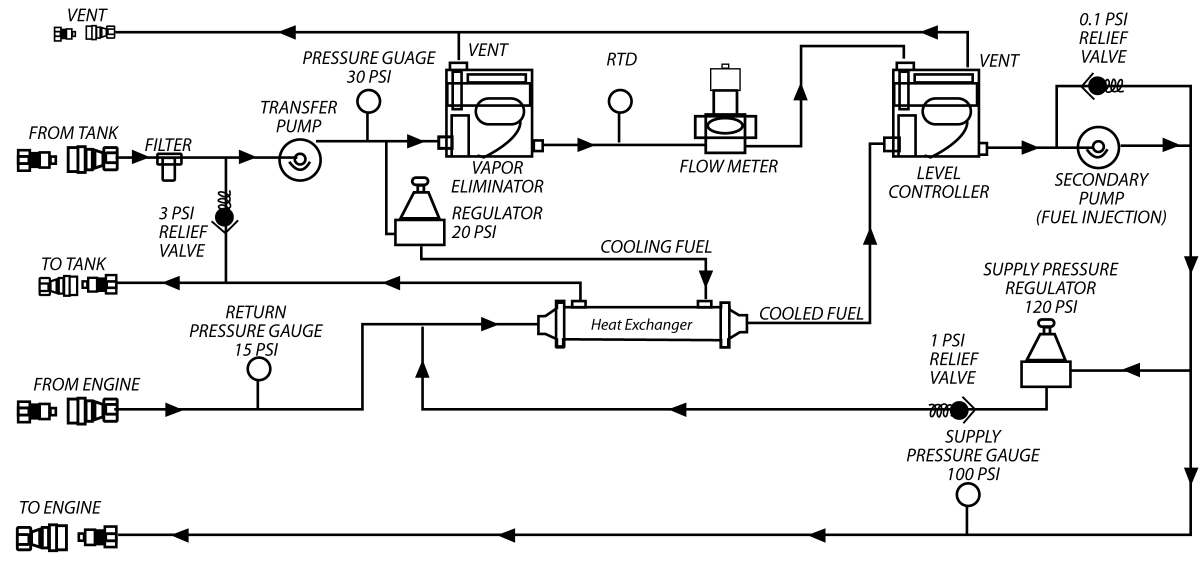To achieve the highest possible accuracy, Max recommends the use of a single-meter fuel measurement system, as opposed to placing a flow meter in both the fuel supply and return lines and calculating the difference.
There are several important advantages of a single meter system over an “A minus B” system.
A two meter system risks a resolution error: i.e. if you have a 0.5% error in a 100 gph supply and a 0.5% meter in a 95 gph return, you risk a 19% error in measuring the actual 5 gph consumption.
The two meter system must have temperature compensation, even for volumetric measurements, since hot return fuel will expand and over-report the return flow
Any bubbles that occur in the engine will also cause the meter to over-report the return line flow.
To avoid all of these issues, a single meter system with a downstream recirculation tanks is used.
How it's done?
Connecting a flow meter to an engine encompasses a lot more than meets the eye. To avoid any chance of backpressure interfering with the return line flow, we are going to place a vented tank where the engine’s return line and supply line are being joined. This change will create two separate flow loops in the car. Depending on the location of the fuel pump(s), you will need to recreate the pressure levels that usually exist in the car. If the pump is in the fuel tank, you will need a new pump downstream of the recirculation tank to re-establish the pressure going to the engine. If the pump is on the engine, the recirculation tank may be blocking the suction that pulled fuel from the tank and you will need to add a boost pump to draw make-up fuel from the tank and push it through the meter and into the recirculation tank.

The use of a recirculation tank also interrupts another process in the vehicle, namely the use of the fuel tank to dissipate heat from the returning fuel. If we recirculate the fuel multiple times we may impact the engine performance as the overheated fuel will be less dense and lead to a leaner mixture. To return the vehicle to its natural operating condition, this extra heat should be sent to the fuel tank by inserting a heat exchanger to transfer the heat from the return line to the unneeded make-up fuel line.
One final item that should be considered for mobile systems or gasoline systems in particular is a vapor eliminator before the flow meter. Gasoline has volatile components which boil at lower temperatures so to ensure that only liquid is passing through the volumetric meter, a vapor eliminator collects the entrained bubbles and lifts them out of the fluid steam.
Now, the final considerations: The amount of pressure needed to move liquid through the meter and into the recirculation tank is only about 15 psi (1 bar). If the pressure is too low, the tank may not refill fast enough to deal with high consumption rates. It the pressure is too high, the float mechanism in the recirculation tank may not be able to withstand the force of the incoming flow and the tank will flood. Secondly, a pressure regulator on the supply to engine side will also allow you to vary the supply pressure to match the naturally occurring pressure in the vehicle. By bleeding off the pressure back to the recirculation tank, you can use your regulator to reproduce the pressure that the engine normally feels.
If you would like a quote for a similar project, please let us know.


